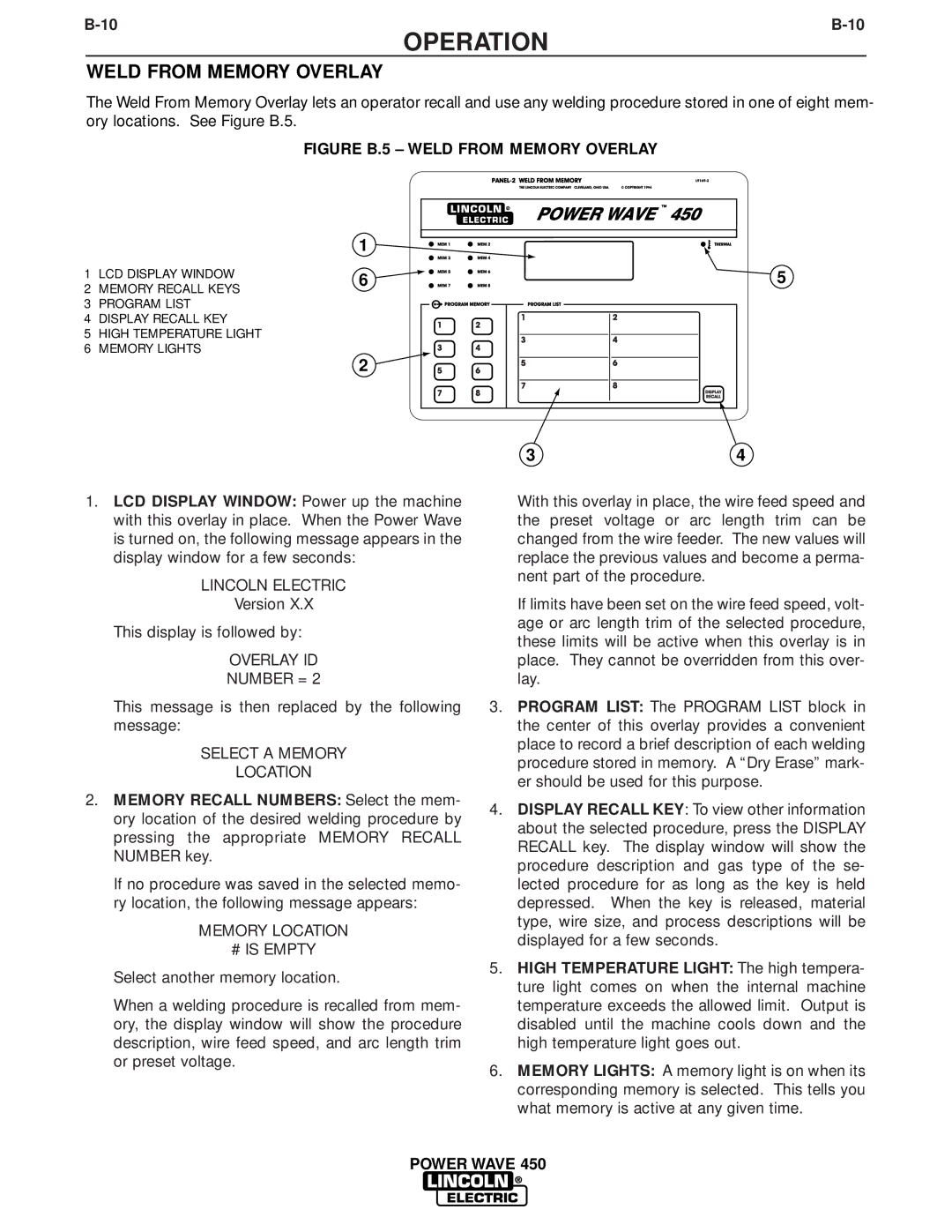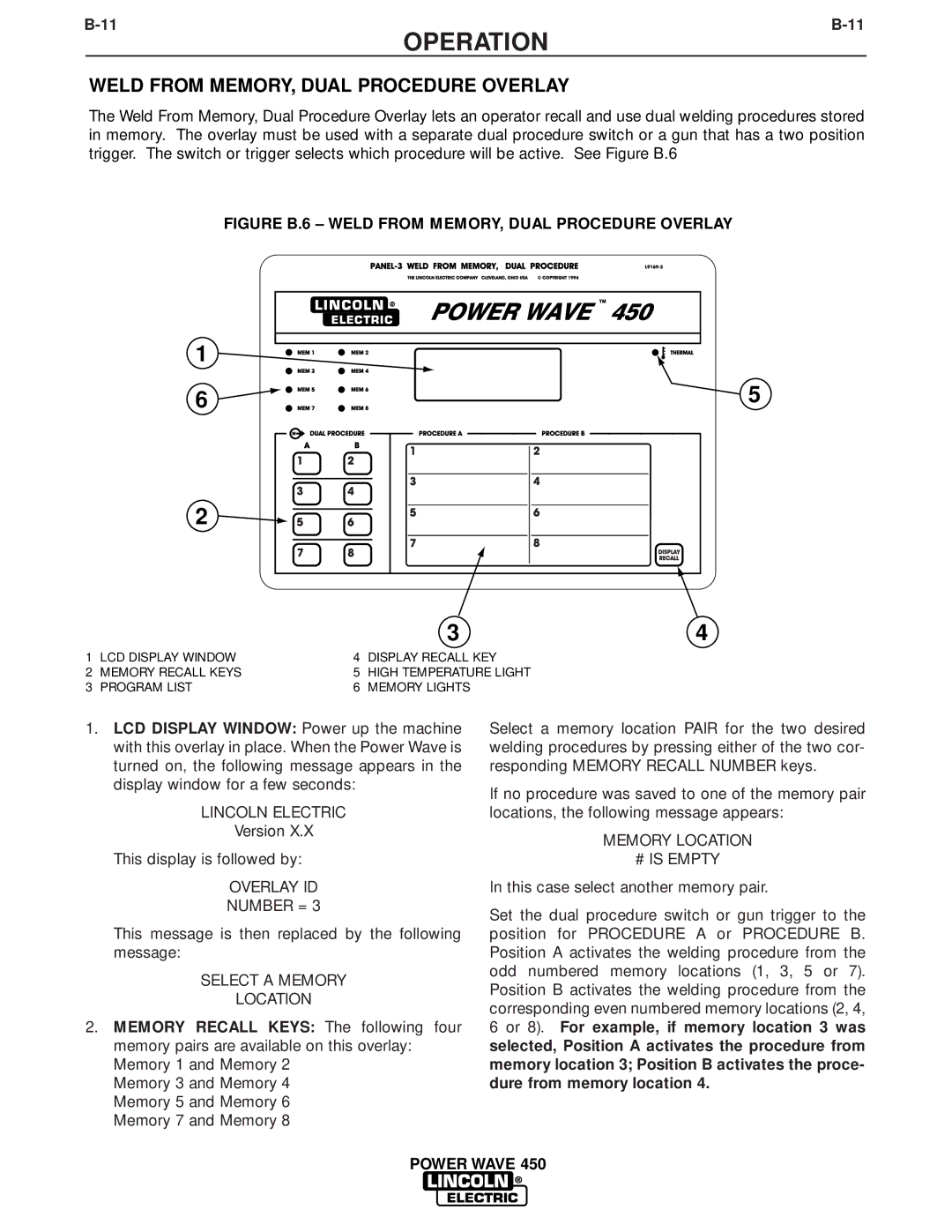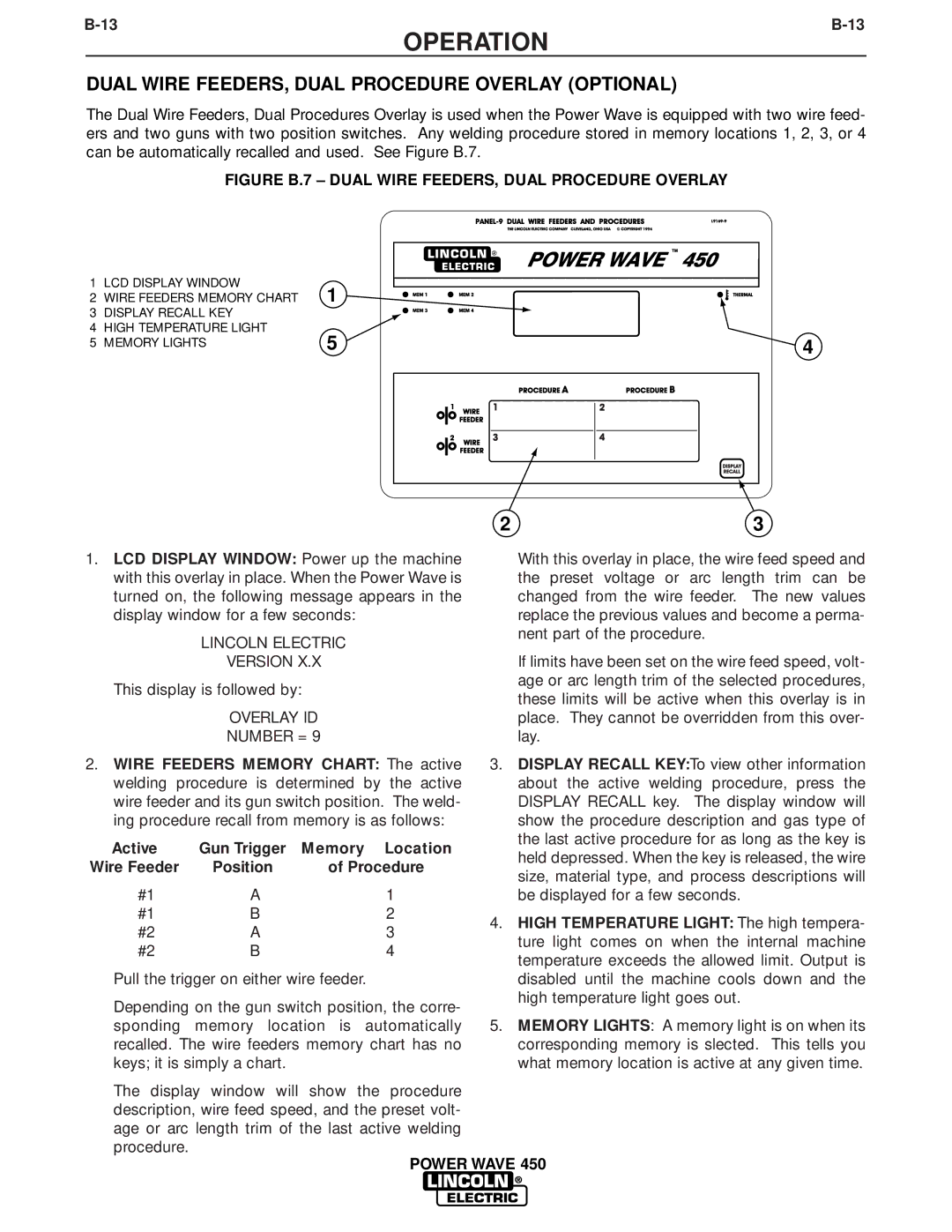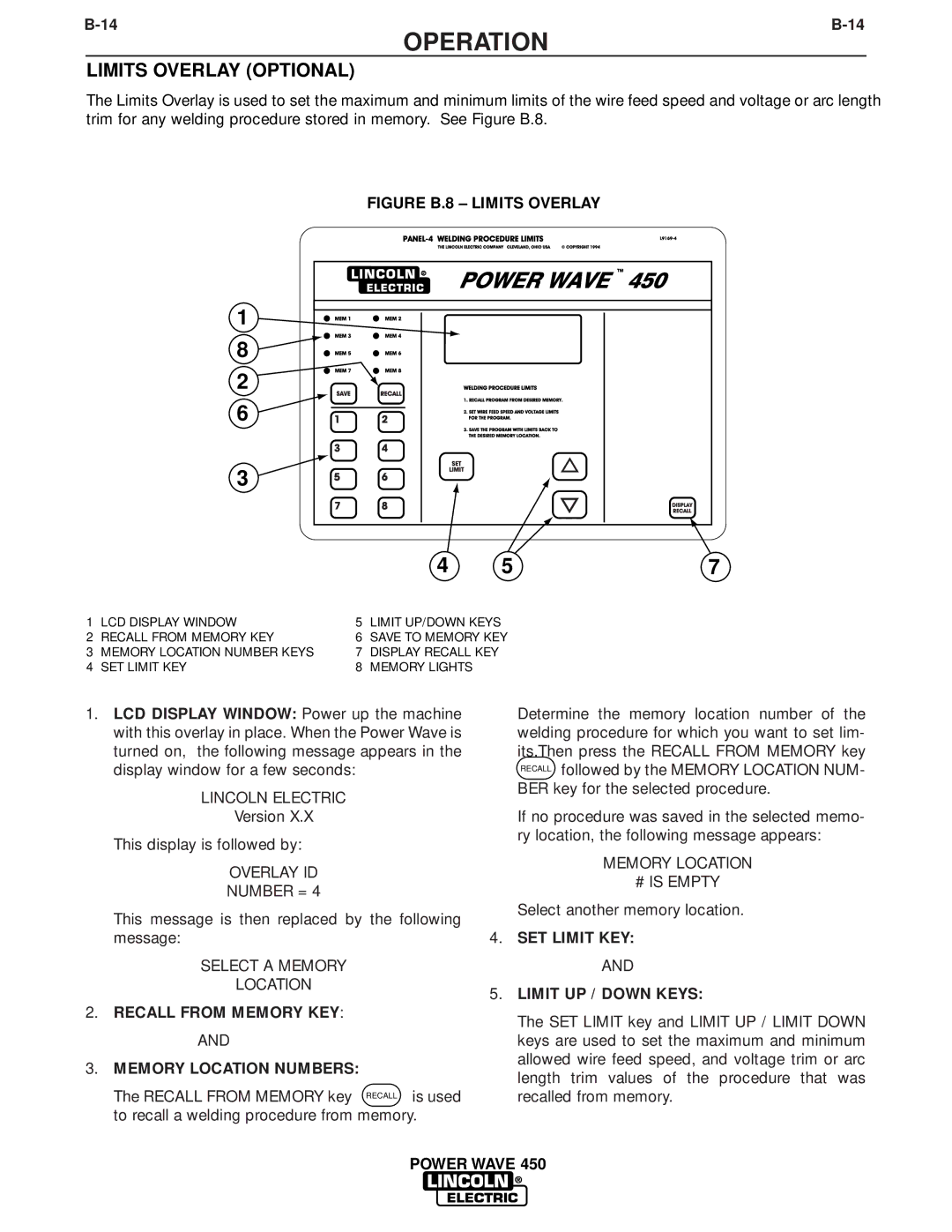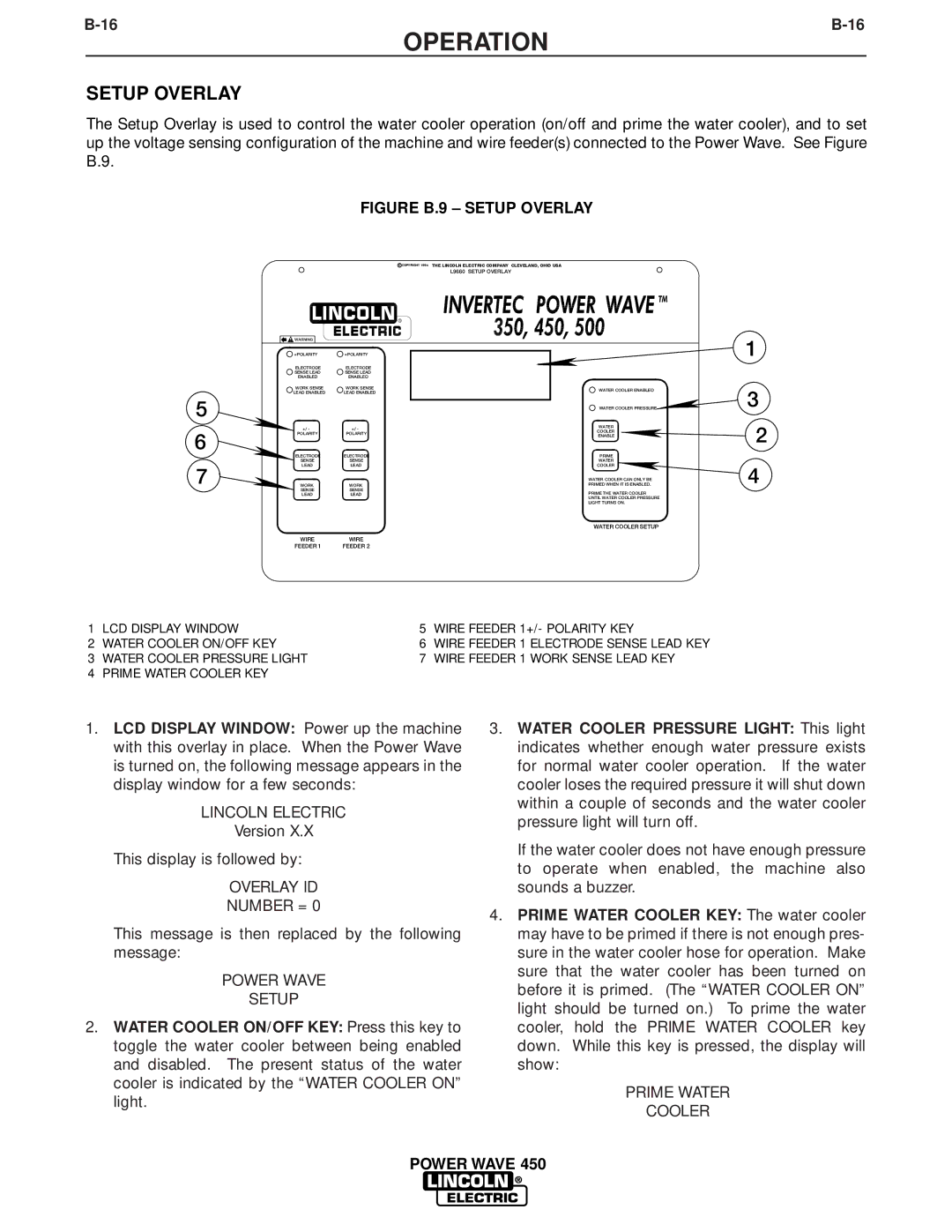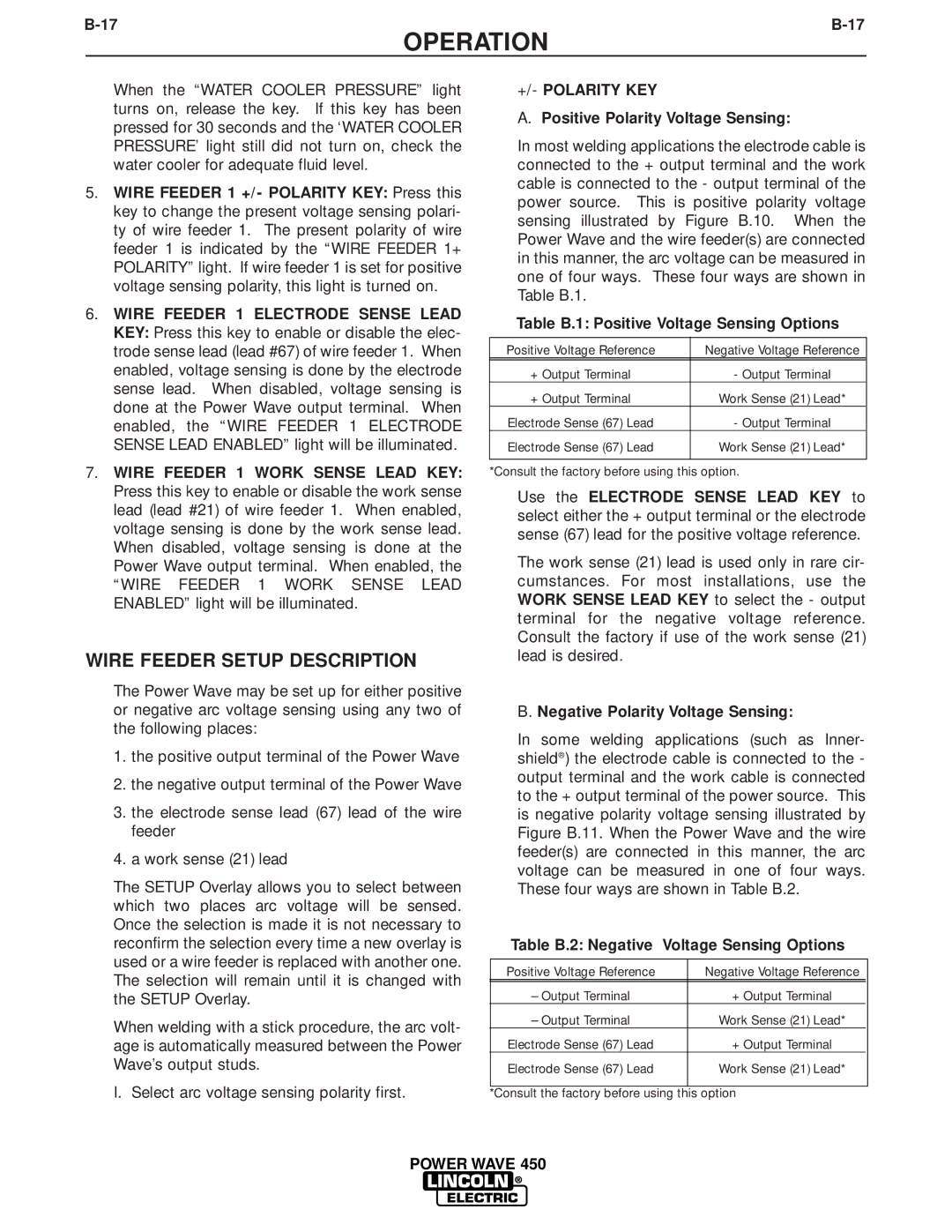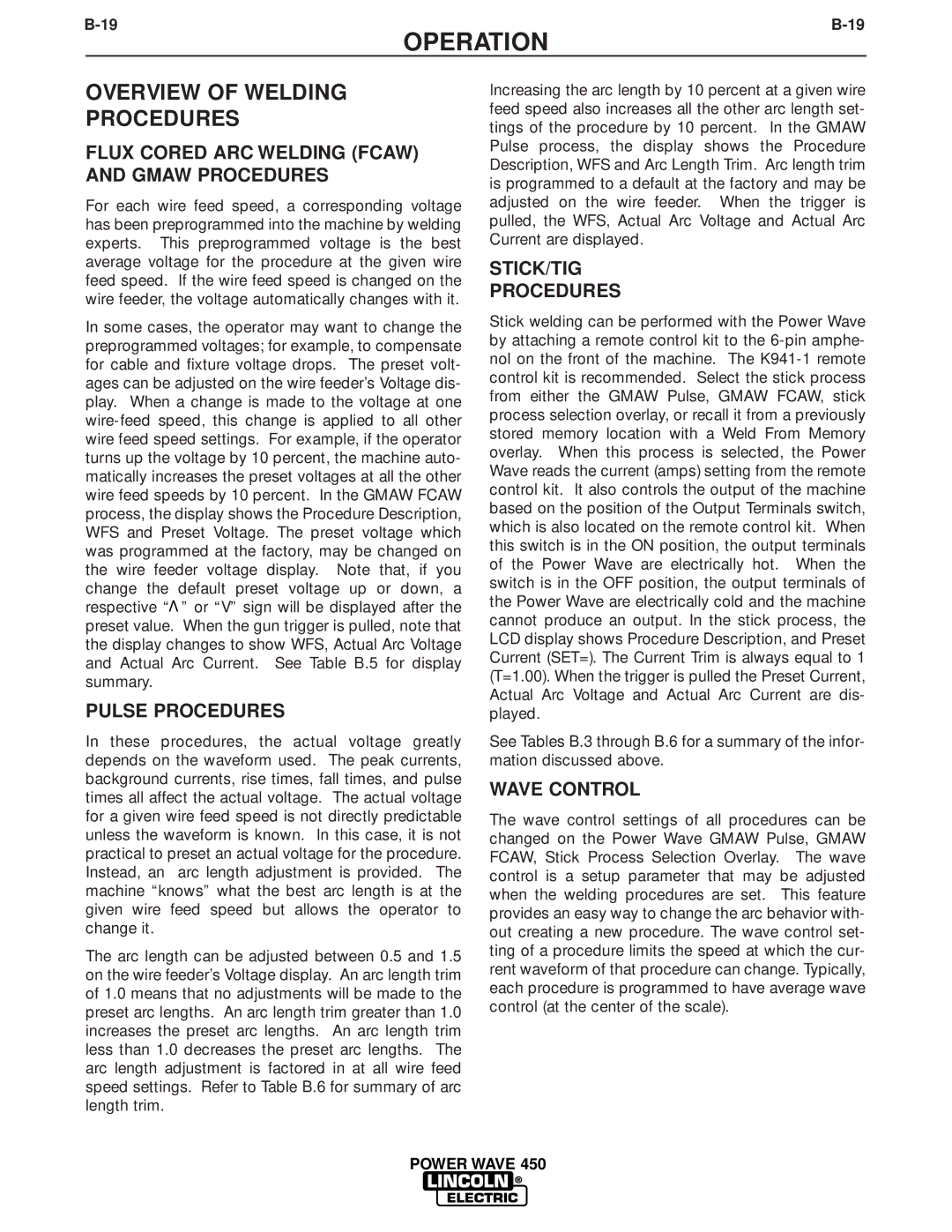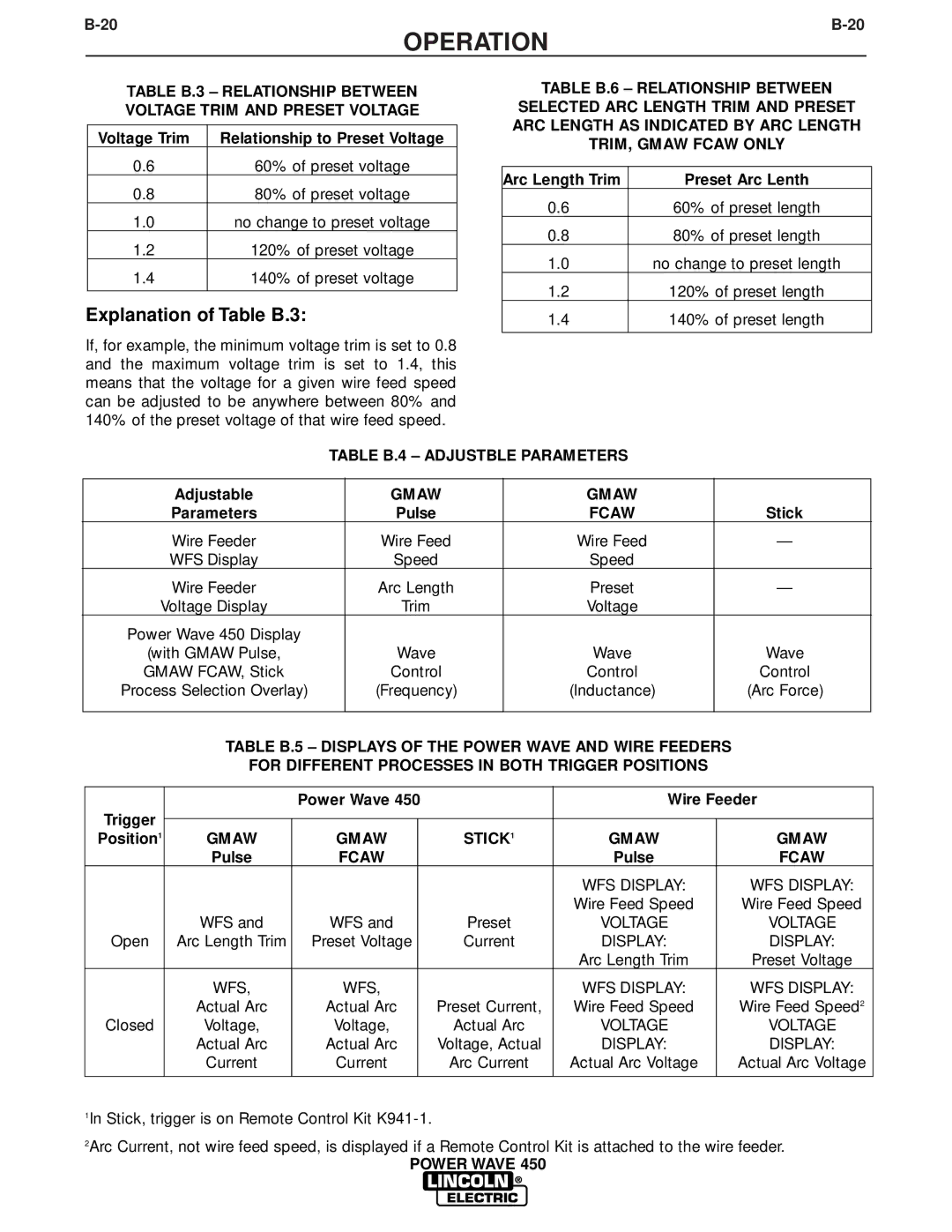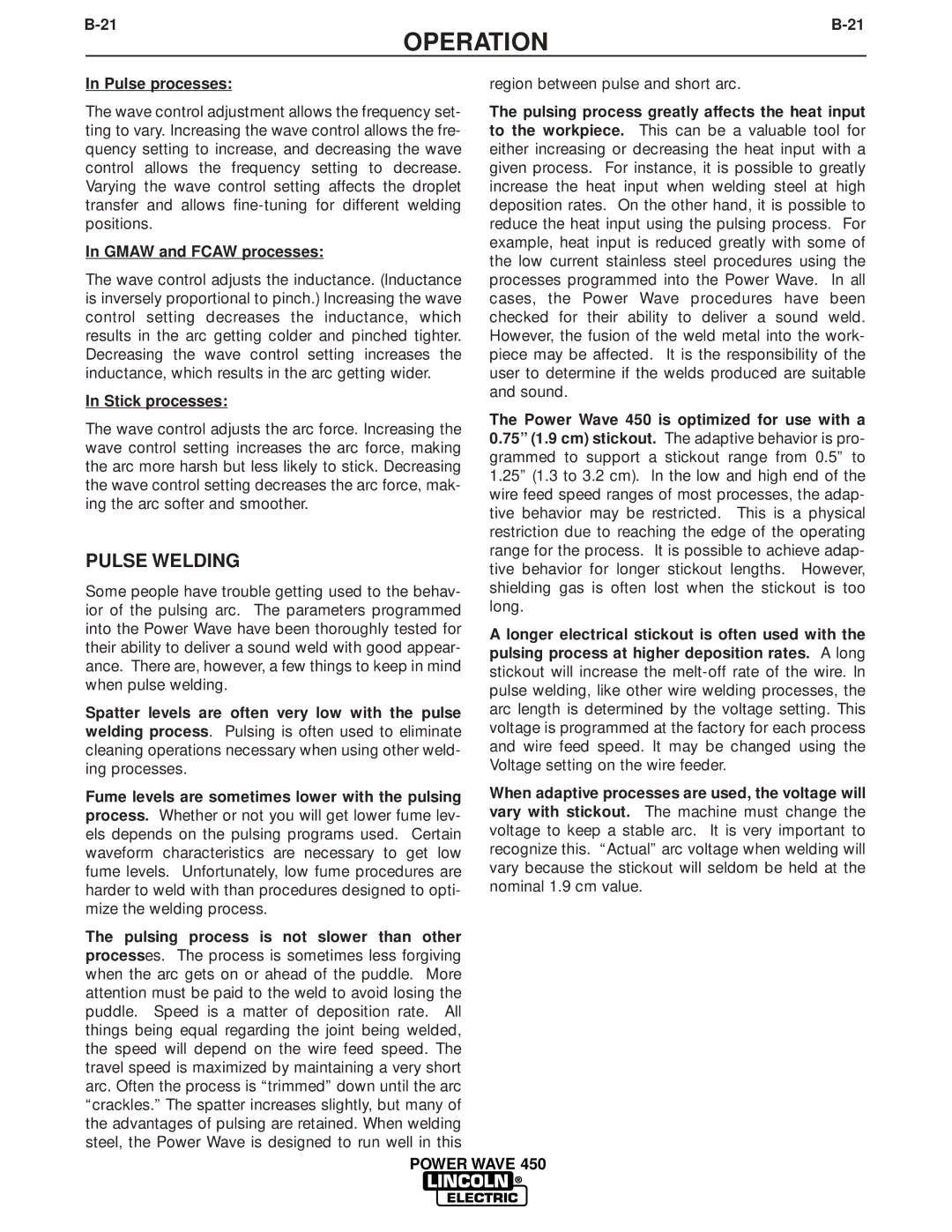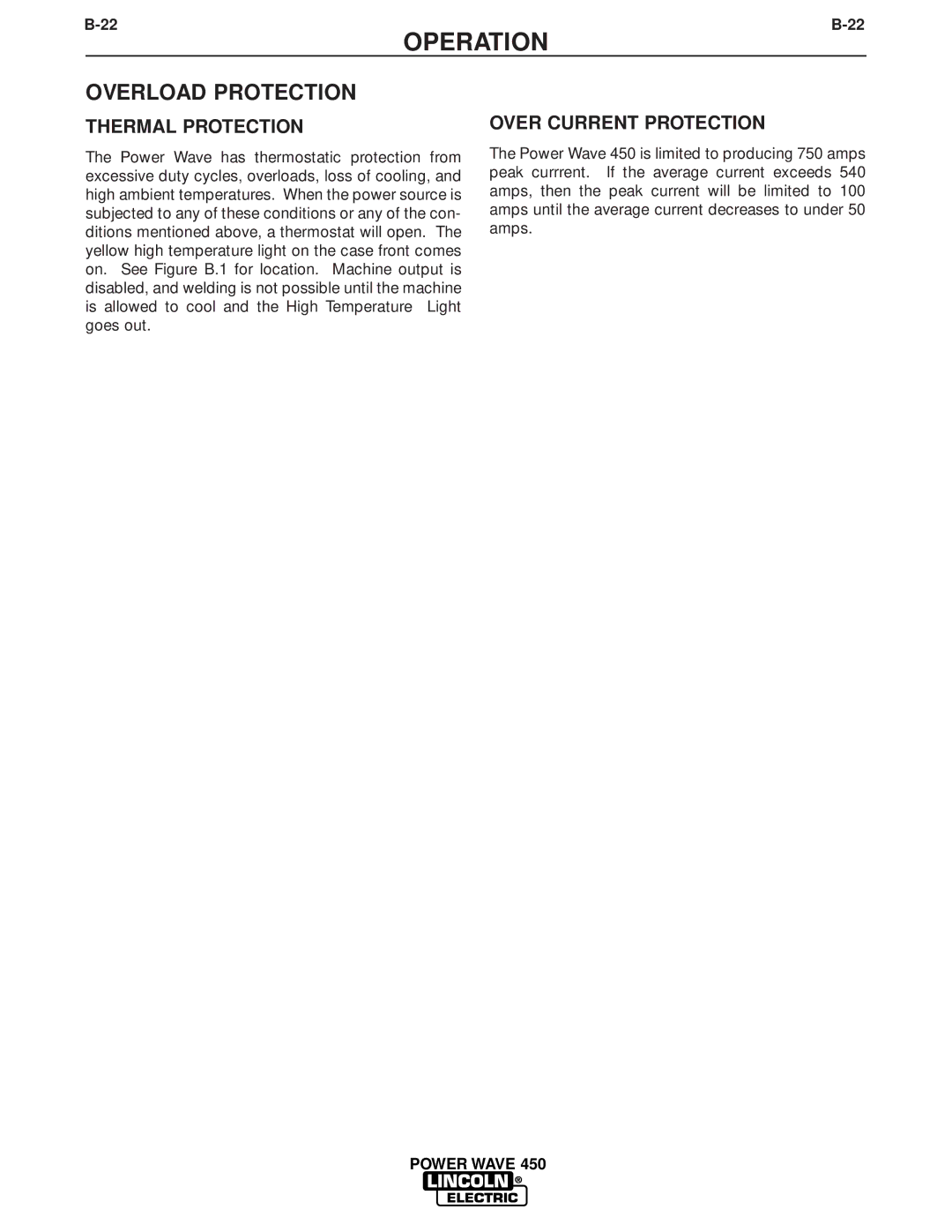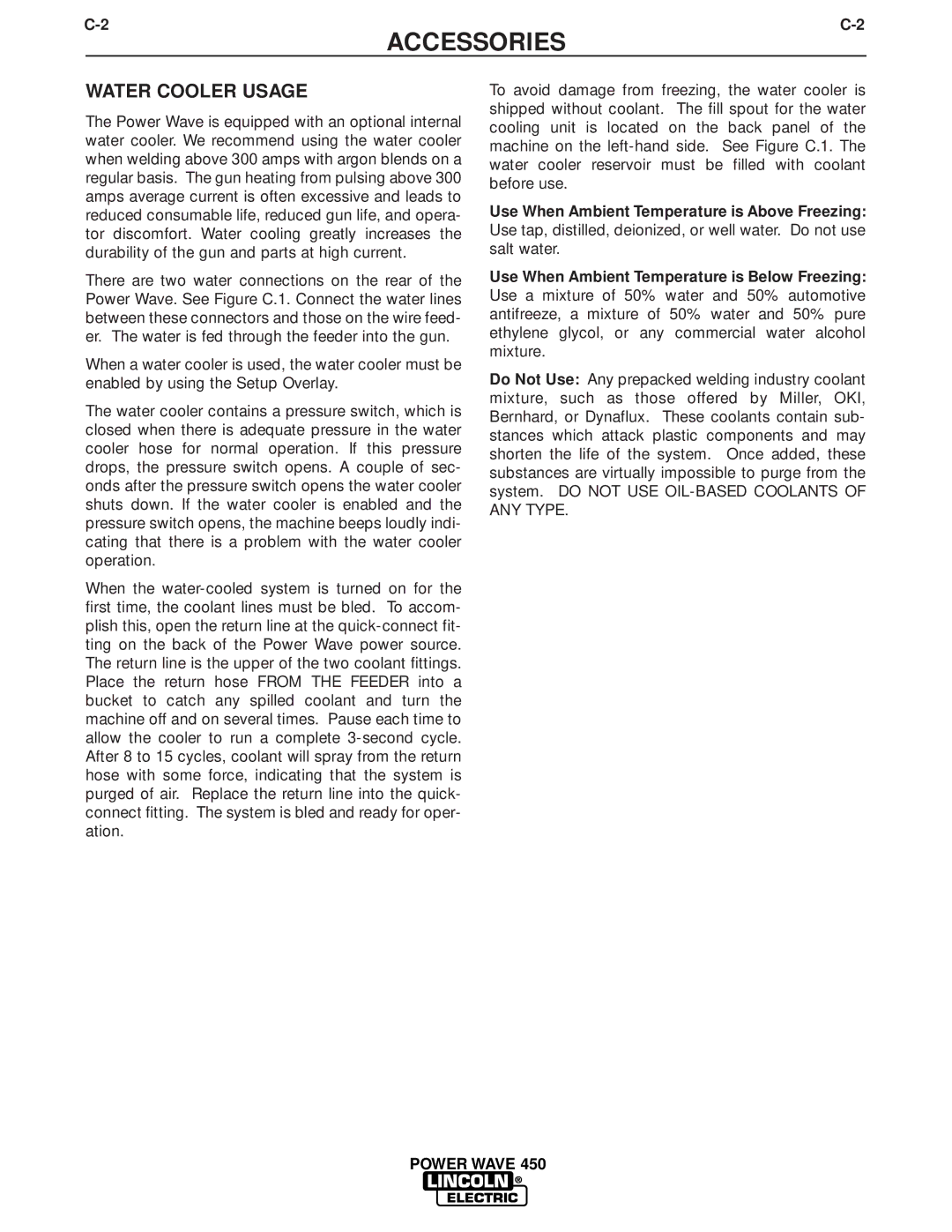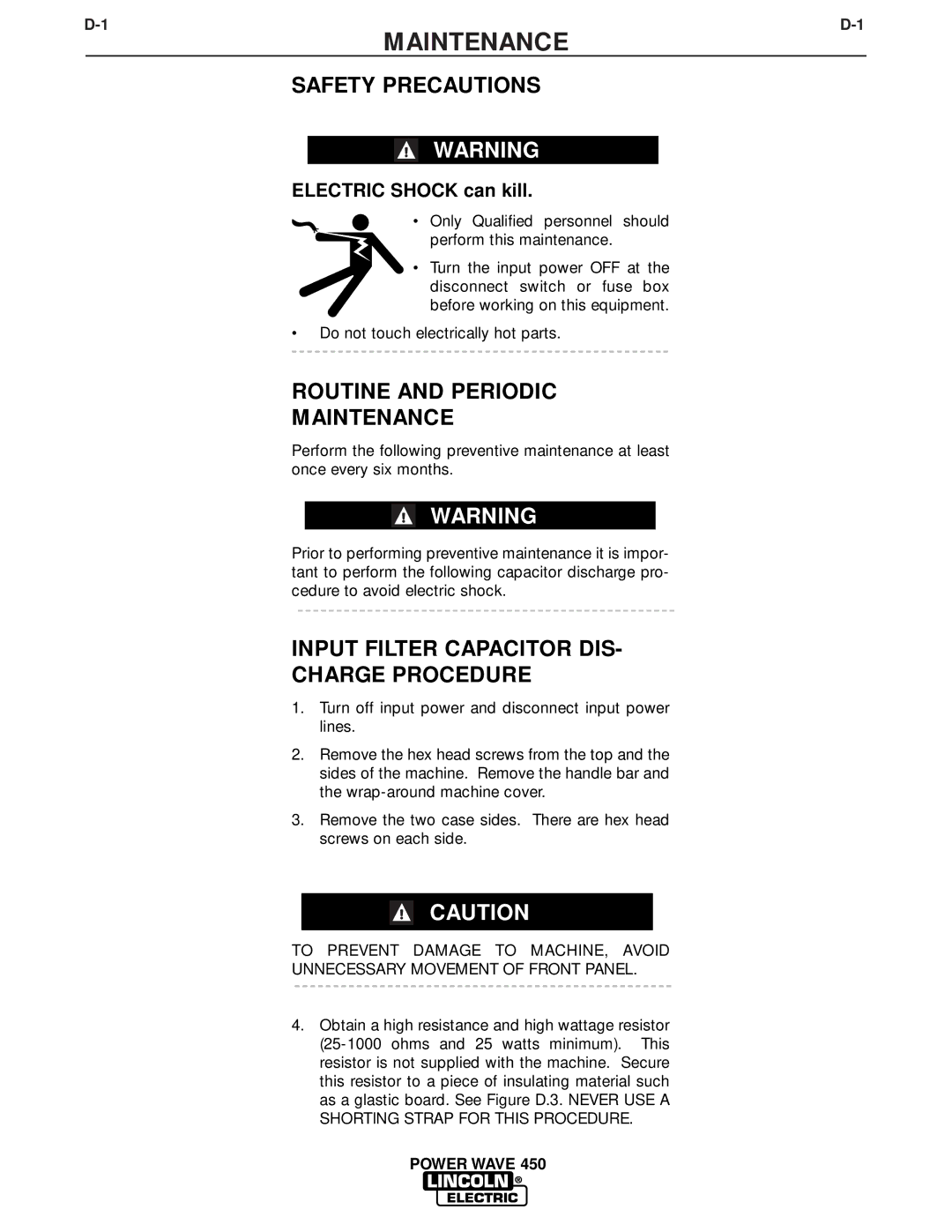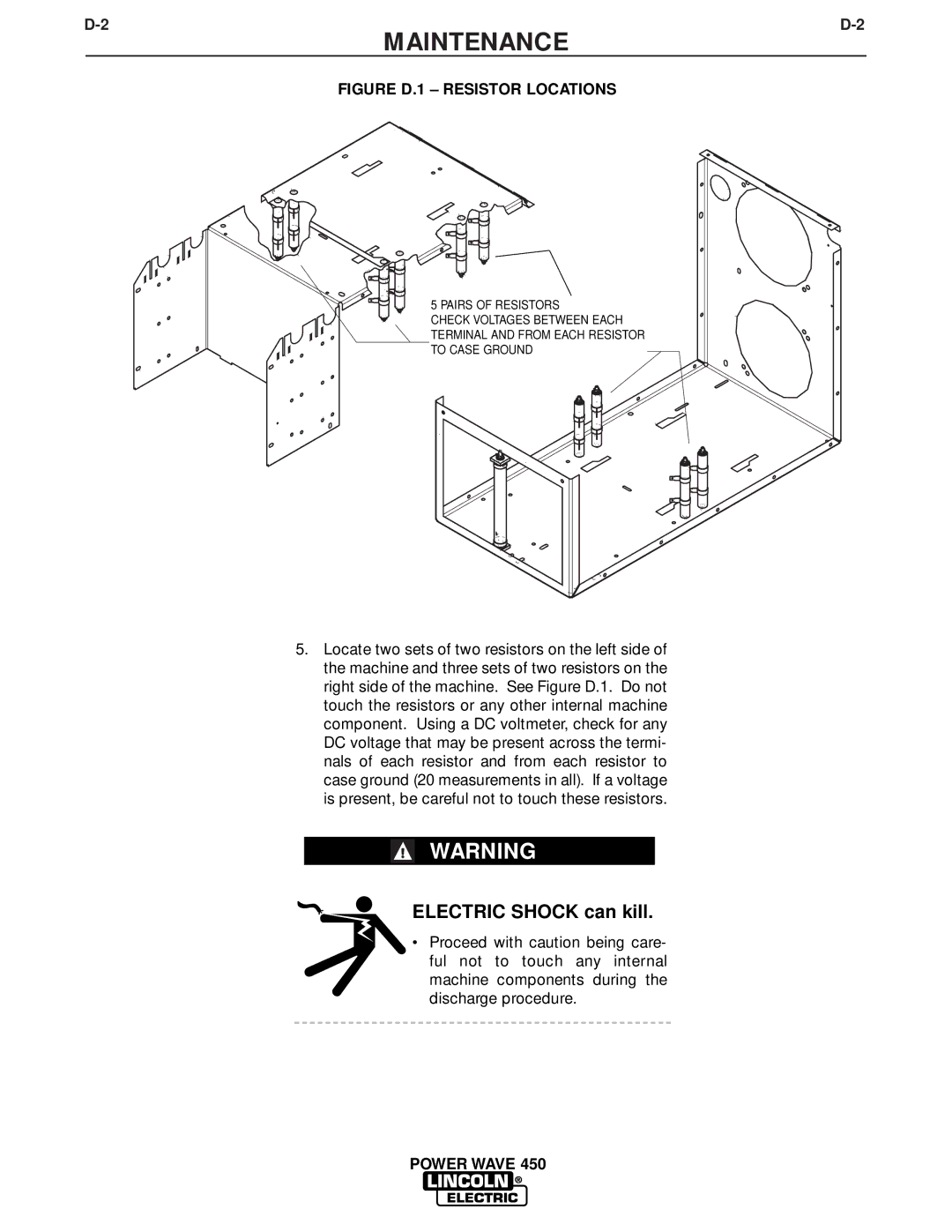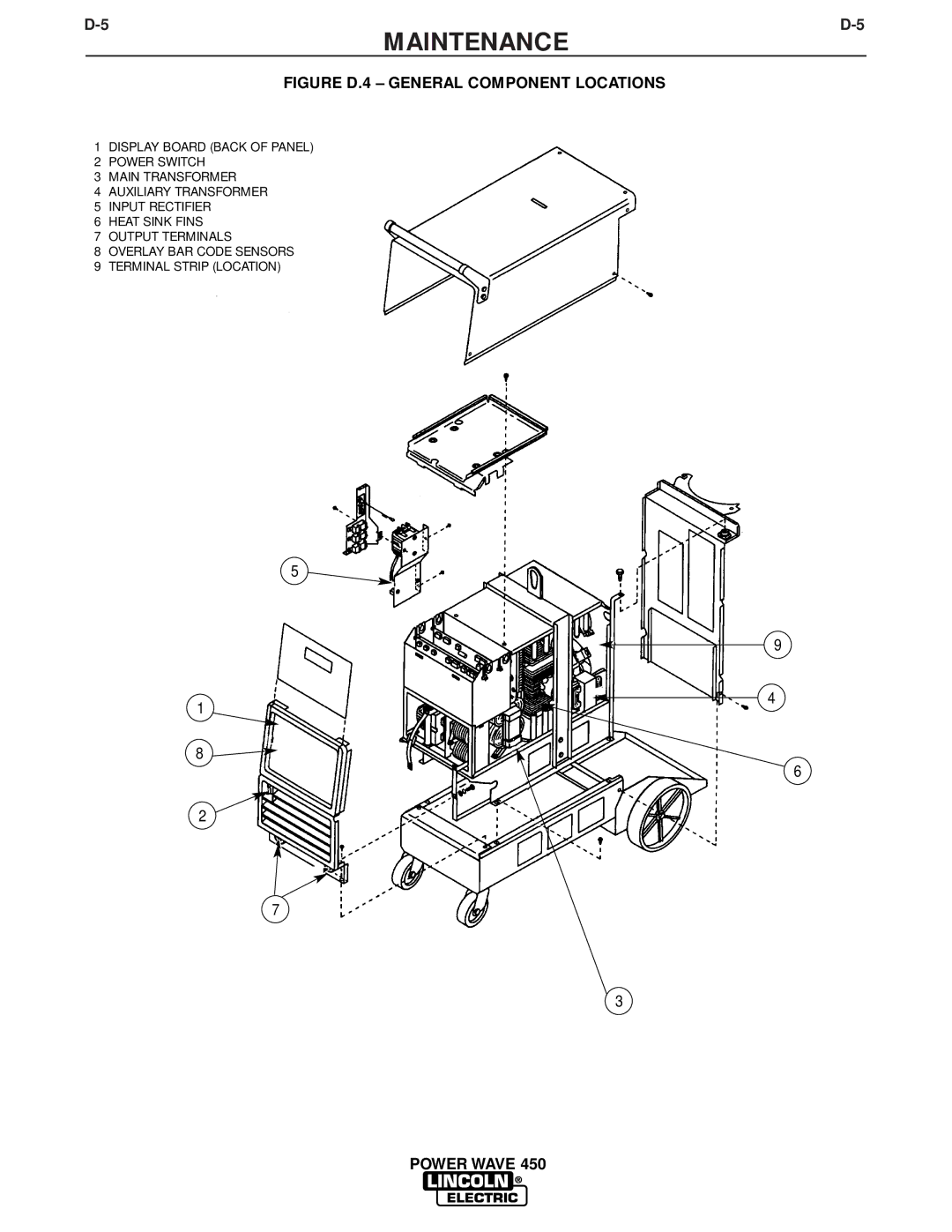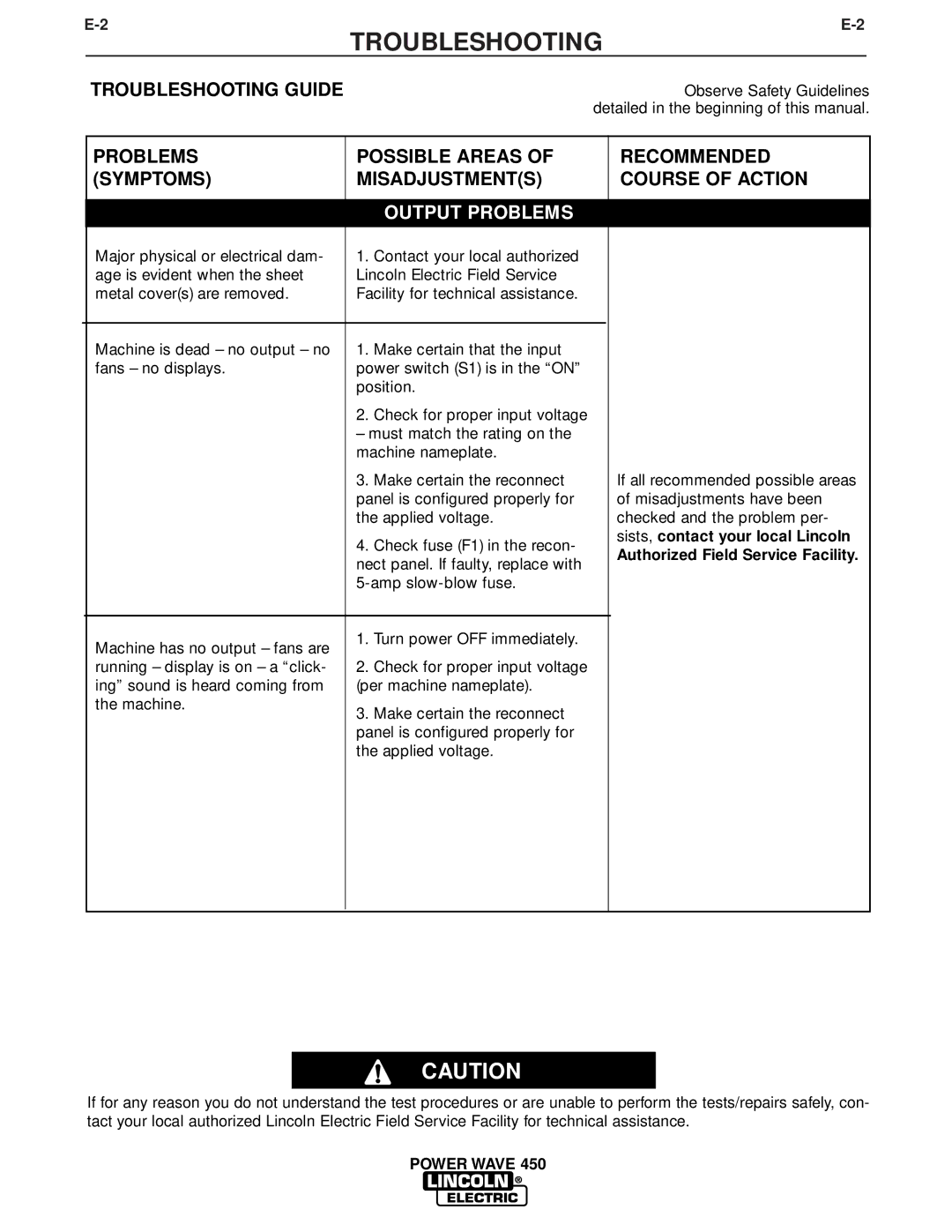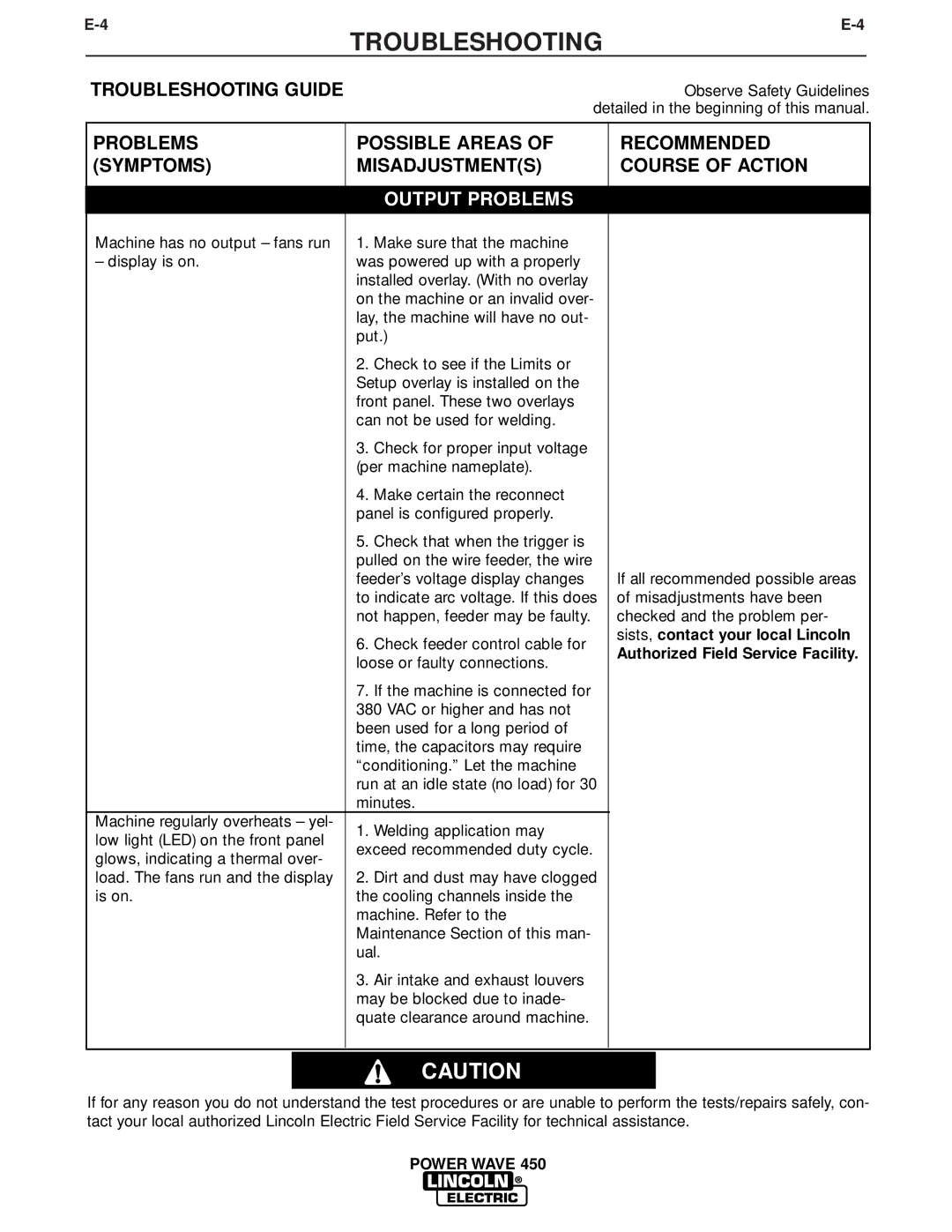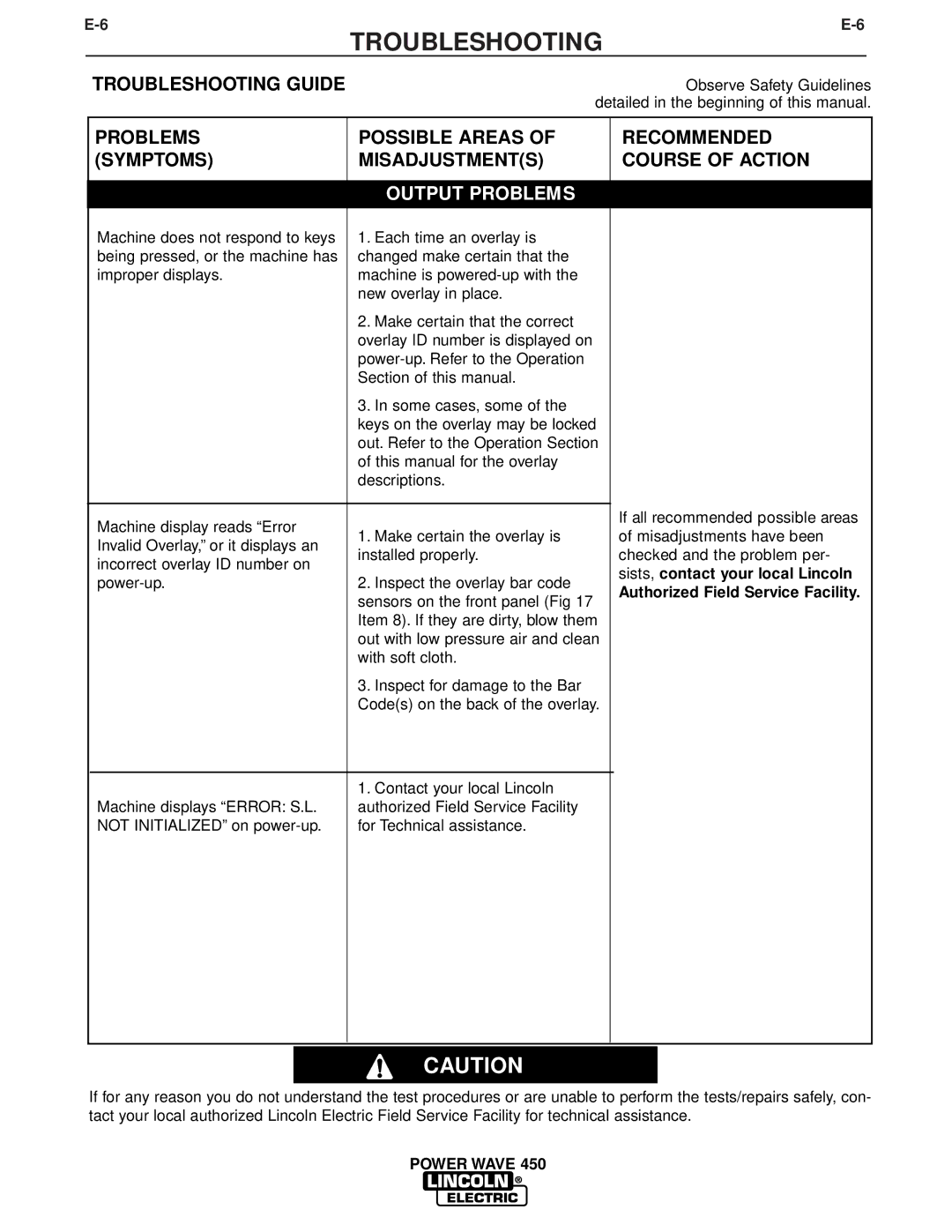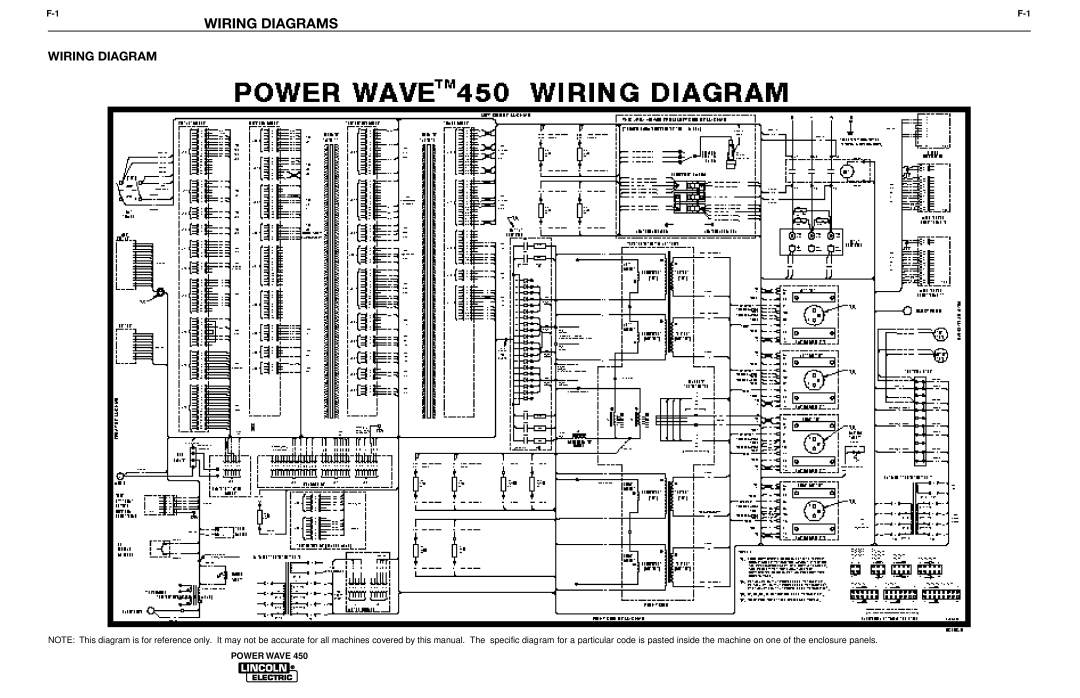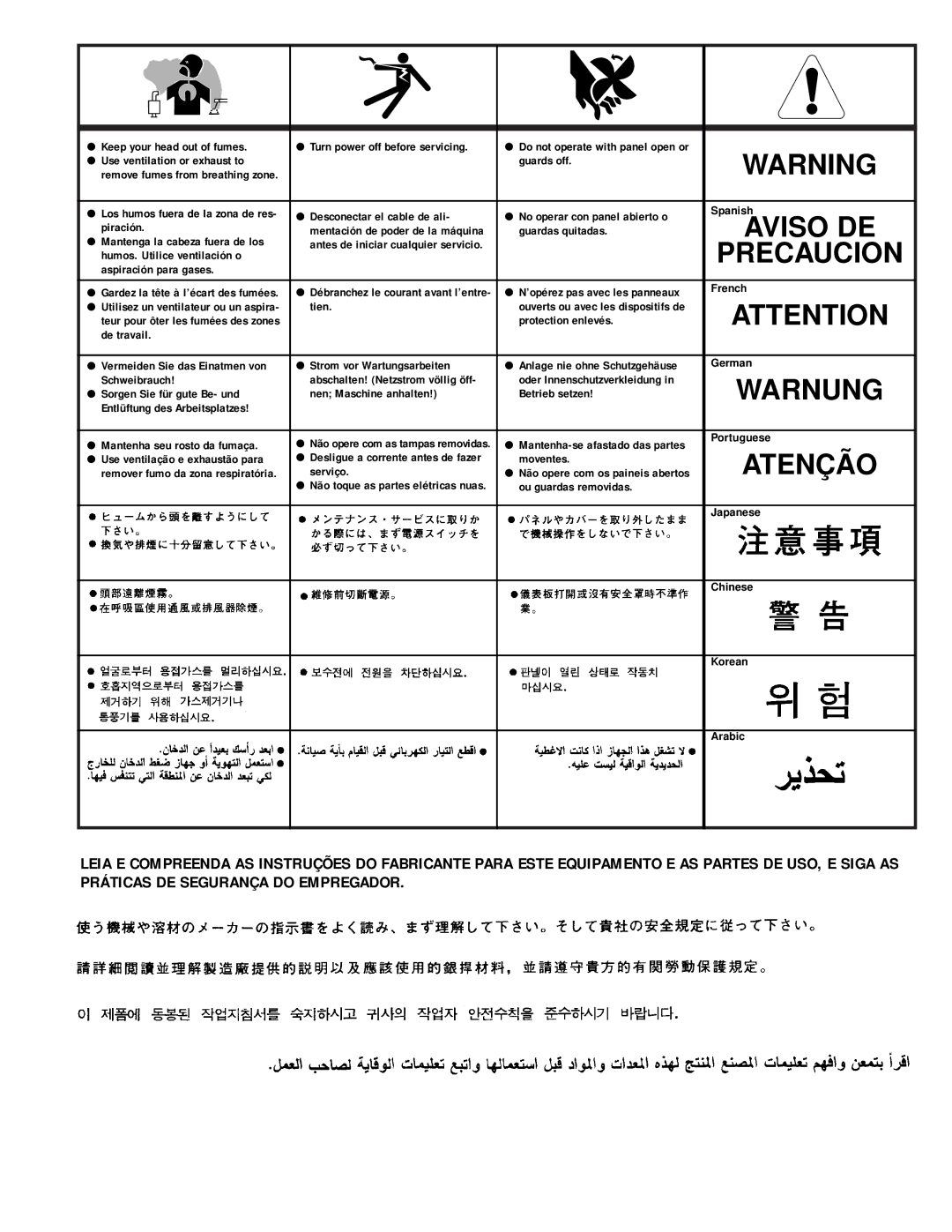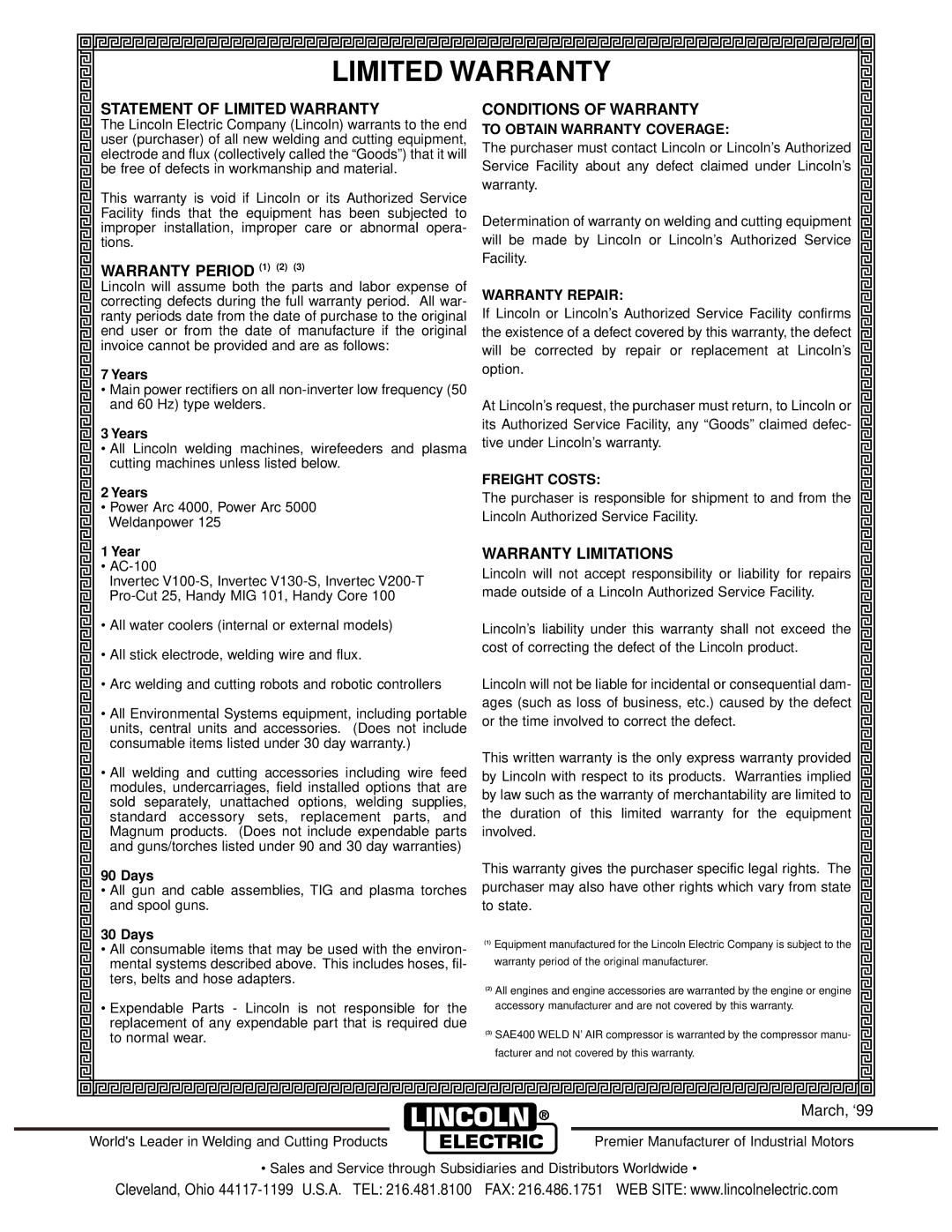
OPERATION
In Pulse processes:
The wave control adjustment allows the frequency set- ting to vary. Increasing the wave control allows the fre- quency setting to increase, and decreasing the wave control allows the frequency setting to decrease. Varying the wave control setting affects the droplet transfer and allows
In GMAW and FCAW processes:
The wave control adjusts the inductance. (Inductance is inversely proportional to pinch.) Increasing the wave control setting decreases the inductance, which results in the arc getting colder and pinched tighter. Decreasing the wave control setting increases the inductance, which results in the arc getting wider.
In Stick processes:
The wave control adjusts the arc force. Increasing the wave control setting increases the arc force, making the arc more harsh but less likely to stick. Decreasing the wave control setting decreases the arc force, mak- ing the arc softer and smoother.
PULSE WELDING
Some people have trouble getting used to the behav- ior of the pulsing arc. The parameters programmed into the Power Wave have been thoroughly tested for their ability to deliver a sound weld with good appear- ance. There are, however, a few things to keep in mind when pulse welding.
Spatter levels are often very low with the pulse welding process. Pulsing is often used to eliminate cleaning operations necessary when using other weld- ing processes.
Fume levels are sometimes lower with the pulsing process. Whether or not you will get lower fume lev- els depends on the pulsing programs used. Certain waveform characteristics are necessary to get low fume levels. Unfortunately, low fume procedures are harder to weld with than procedures designed to opti- mize the welding process.
The pulsing process is not slower than other processes. The process is sometimes less forgiving when the arc gets on or ahead of the puddle. More attention must be paid to the weld to avoid losing the puddle. Speed is a matter of deposition rate. All things being equal regarding the joint being welded, the speed will depend on the wire feed speed. The travel speed is maximized by maintaining a very short arc. Often the process is “trimmed” down until the arc “crackles.” The spatter increases slightly, but many of the advantages of pulsing are retained. When welding steel, the Power Wave is designed to run well in this
region between pulse and short arc.
The pulsing process greatly affects the heat input to the workpiece. This can be a valuable tool for either increasing or decreasing the heat input with a given process. For instance, it is possible to greatly increase the heat input when welding steel at high deposition rates. On the other hand, it is possible to reduce the heat input using the pulsing process. For example, heat input is reduced greatly with some of the low current stainless steel procedures using the processes programmed into the Power Wave. In all cases, the Power Wave procedures have been checked for their ability to deliver a sound weld. However, the fusion of the weld metal into the work- piece may be affected. It is the responsibility of the user to determine if the welds produced are suitable and sound.
The Power Wave 450 is optimized for use with a 0.75” (1.9 cm) stickout. The adaptive behavior is pro- grammed to support a stickout range from 0.5” to 1.25” (1.3 to 3.2 cm). In the low and high end of the wire feed speed ranges of most processes, the adap- tive behavior may be restricted. This is a physical restriction due to reaching the edge of the operating range for the process. It is possible to achieve adap- tive behavior for longer stickout lengths. However, shielding gas is often lost when the stickout is too long.
A longer electrical stickout is often used with the pulsing process at higher deposition rates. A long stickout will increase the
When adaptive processes are used, the voltage will vary with stickout. The machine must change the voltage to keep a stable arc. It is very important to recognize this. “Actual” arc voltage when welding will vary because the stickout will seldom be held at the nominal 1.9 cm value.
POWER WAVE 450

